- Home
- Stephen Baxter
Voyage n-1
Voyage n-1 Read online
Voyage
( NASA - 1 )
Stephen Baxter
The book depicts a manned mission to Mars as it might have been in another timeline, one where John F. Kennedy survived the assassination attempt on him in 1963.
Voyage is the epic saga of America’s might-have-been — a powerful, sweeping novel imaginatively created from true lives and real events. NASA, the Saturn rocket, and historical figures from Neil Armstrong to Ronald Reagan are interwoven with unforgettable characters that only a world-class novelist could bring to life: Dana, the Nazi camp survivor who achieves the dream of his hated masters; Gershon, the Vietnam fighter jock determined to be the first African-American to land on another planet; Lee, the small-scale aerospace contractor with a big dream; Priest, who gives his life so that others might live to walk on Mars. And most memorable of all, Natalie York, the brilliant geologist/astronaut who is her own worst enemy, and best friend; a passionate woman who risks a career and a lifelong love for the chance to run her fingers through the soil of another world.
Voyage won a Sidewise Award for Alternate History, and was nominated for the Arthur C. Clarke Award in 1997.
Voyage
by Stephen Baxter
For my nephew, William Baxter
AUTHOR’S NOTE
In 1996, evidence of life on Mars has ignited interest in manned missions to the red planet, but such missions are many years, perhaps decades, away. But NASA could have sent astronauts to Mars as long ago as 1986.
Voyage depicts an alternate history: a time line identical to our own up to a crucial moment in the autumn of 1963 and diverging thereafter.
This novel is a work of fiction. Because of the nature of the plot certain real people associated with the U.S. manned space program are referred to in the story by their real names. For the purposes of weaving my story into the fabric of our own history I have replaced some historical personages with fictional characters. In particular, the second American to orbit Earth was Scott Carpenter, not Chuck Jones as portrayed in the novel; and the second man to walk on the Moon was Buzz Aldrin, not Joe Muldoon as portrayed here. All other characters are fictional constructs, in which case any resemblance to any real individual is wholly unintentional and coincidental.
I would like to acknowledge the invaluable help of Simon Bradshaw, Eric Brown, and Calvin Johnson, all of whom read and commented on versions of the manuscript; and the staff at NASA’s Johnson Space Center, Houston, who were extremely generous of their time and energy in support of my research for this book, particularly Eileen Hawley, Paul Dye, Frank Hughes, astronaut Michael Foale, and especially Kent Joosten of JSC’s Solar System Exploration Division, who scrutinized my Mars mission with great attention and care. The assistance of these friends has greatly improved the accuracy of my depiction, and any remaining errors and omissions are my responsibility.
In our history, Americans have not traveled to Mars. But in 1969 the U.S. came as close as it ever has to assembling the will and resources for such a mission. Diagrams in the endpapers show how the mission might have been assembled. In an afterword, for interested readers, I have set out my understanding of the crucial historical points at which America turned away from Mars.
In 1996, we need scientists on Mars, they could have been there a decade ago. My novel may be the closest thing to a history of that lost, alternate universe ever to be written, and I have striven to make it as “true” as possible.
It really would have been like this.
Stephen Baxter
Great Missenden
October 1996
Prologue
This is Ares Launch Control, Jacqueline B. Kennedy Space Center.
We have passed the six-minute mark in our countdown. Now at T minus five minutes fifty-one seconds and counting.
Ares waits ready for launch on Launch Complex 39A.
We are on schedule at the present time for the planned liftoff at thirty-seven minutes past the hour.
Spacecraft test conductor has now completed the status check of his personnel in the control room. All report that they are go for the mission, and this has been reported to the test supervisor.
The test supervisor is now going through additional status checks.
Launch operations manager reports go for launch.
Mission Control at Houston reports that all systems on the Ares orbital booster cluster are also nominal and ready to support the mission. The need to be in plane with the cluster, to enable the docking, is imposing a tight window on today’s launch.
Launch director now gives the go. We are at T minus four minutes fifty seconds and counting.
At launch time, you may wish to look out for flights of pelicans, egrets, and herons, from the marshy land here on Merritt Island. Forty years ago Merritt pretty much belonged to the birds, and they’re still here, although nowadays they’re disturbed every few months by a new launching.
It has taken nine Saturn VB launches so far to put the Ares complex into orbit. Today’s will be the tenth. So nesting isn’t so good anymore.
T minus four minutes and counting. As a preparation for main engine ignition, the fuel valve heaters have been turned on. T minus three minutes fifty-four seconds and counting. The final fuel purge on the main engines has been started. That’s the vapor you can see there, billowing across the launchpad, away from the Saturn booster.
The liquid oxygen replenish system has been turned off, so we can pressurize the tanks for the launch.
The wind is below ten knots, and we have a thin cloud layer. That’s pretty nearly perfect launch weather, well within mission parameters.
It is typically hot, humid Florida weather here, on this historic day, Thursday, March 21, 1985.
T minus three minutes forty seconds and counting.
I am told that there are an estimated one million here with us today, the largest turnout for a launch since Apollo 11. Welcome to all of you. You might like to know that among the celebrities watching the launch today in the VIP enclosure are Apollo 11 astronauts Neil Armstrong, Joe Muldoon, and Michael Collins, cosmonaut Vladimir Viktorenko, along with Liza Minnelli, Clint Eastwood, Steven Spielberg, George Lucas, William Shatner, sci-fi authors Arthur C. Clarke, Ray Bradbury, and Isaac Asimov, and singer John Denver. We’re sure you aren’t going to be disappointed.
T minus three minutes twenty seconds and counting. Ares is now on internal power.
Coming up on T minus three minutes.
T minus three minutes and counting.
The engine gimbal check is under way, to ensure that the engines are moving freely, ready for flight control.
T minus two minutes fifty-two seconds. The liquid oxygen valves on both stages have been closed and pressurization of fuel and oxidizer tanks has begun.
T minus two minutes twenty-five seconds and counting. The liquid oxygen tanks are now at fight pressure.
Coming up on two minutes away from launch.
T minus two minutes mark, and counting. Two minutes from launch.
The liquid hydrogen vent valves have been closed and the hydrogen tanks’ flight pressurization is under way.
T minus one minute fifty seconds and counting. No holds so far.
Capcom John Young has just said, “Smooth ride, baby,” to astronauts Phil Stone, Ralph Gershon, and Natalie York Mission Commander Stone has replied, “Thank you very much, we know it will be a good fight.”
T minus one minute thirty-five seconds and counting.
T minus one minute ten seconds and counting. All liquid hydrogen tanks are at fight pressure.
T minus one minute, mark, and counting.
The firing system for the sound-suppression water system will be armed just a couple of seconds from now.
The firing system has now b
een armed.
T minus forty-five seconds and counting.
T minus forty seconds and counting. The development fight instrumentation recorders are on. We are still go with Ares.
Astronaut Stone reports “It feels good.”
T minus thirty seconds.
We are just a few seconds away from switching on the redundant sequence. This is the automatic system for engine cutoff.
T minus twenty-seven seconds and counting.
We have go for redundant sequence start.
T minus twenty seconds and counting. Sound-suppression system fired. Solid Rocket Boosters armed.
T minus fifteen, fourteen, thirteen.
T minus ten, nine, eight.
Main engine start.
Book One
DECISION
Thursday, February 13, 1969
MEMORANDUM for
— The Vice President
— The Secretary of Defense
— The Acting Administrator, National Aeronautics and Space Administration
— The Science Advisor
It is necessary for me to have in the near future a definitive recommendation on the direction which the US space program should take in the post-Apollo period. I, therefore, ask the Secretary of Defense, the Acting Administrator of NASA, and the Science Advisor each to develop proposed plans and to meet together as a Space Task Group, with the Vice President in the chair, to prepare for me a coordinated program and budget proposal. In developing your proposed plans, you may wish to seek advice from the scientific, engineering, and industrial communities, from Congress and the public.
I would like to receive the coordinated proposal by September 1, 1969.
Richard M. Nixon
Handwritten addendum: Spiro, do we have to go to Mars? What options have we got? — RMN
Source: Public Papers of the Presidents of the United States: Richard M. Nixon, 1969 (Washington, DC Government Printing Office, 1969) Mission Elapsed Time [Day/Hr:Min:Sec] Minus 000/00:00:08
In their orange pressure suits, York, Gershon, and Stone were jammed together so close they were rubbing elbows. They were shielded from daylight; small fluorescent floods lit up the Command Module’s cramped cabin.
There was a powerful thump. York, startled, glanced at her crewmates.
“Fuel pumps,” Stone said.
York heard a dull rumbling — like faraway thunder — a shudder that transmitted itself through the padded couch to her body.
Hundreds of feet below York, liquid oxygen and hydrogen were rushing together, mingling in the big first-stage engines’ combustion chambers.
She could feel her heartbeat rising, clattering within her chest. Take it easy, damn it.
A small metal model of a cosmonaut, squat and Asiatic, dangled from a chain fixed above her head. This was Boris, the gift from Vlad Viktorenko. The toy swung back and forth, its grotesque features leering at her out of a sketch of a helmet. Good luck, Bah-reess.
The noise began, cacophonous, a steady roar. It was like being inside the mouth of some huge, bellowing giant.
Phil Stone shouted, “All five at nominal. Stand by for the stretch.”
The five liquid rocket engines of the Saturn VB booster’s first stage, the MS-IC, had ignited a full eight seconds ahead of the enhanced Saturn’s four Solid Rocket Boosters. And next came the “stretch,” as the stack reached up under the pressure of that immense thrust. She could feel the ship pushing upward, hear the groan of strained metal as the joints of the segmented solid boosters flexed.
It was all supposed to happen this way. But still… Jesus. What a design.
Stone said, “Three, two. SRB ignition.”
They were committed. The solid boosters were big firecrackers; once the SRBs were ignited, nothing could stop them until they burned out.
“Clock is running—”
Zero.
There was a jolt: mild, easy. The explosive pins holding down the boosters had snapped.
Nothing as heavy as a Saturn VB was going to leap into the air.
The cabin started to shake, the couch restraints and fittings rattling.
“Climbout,” Stone said evenly. “Here we go.”
Ralph Gershon whooped. “Rager! Going full bore!”
Liftoff. Good God. I’m off the ground.
She felt excitement surge in her; the grainy reality of the motion pressed in on her. “Poyekhali!” she shouted. Let’s go! — the spontaneous cry of an excited Yuri Gagarin.
The lurching continued.
York was thrown against her harness, to the right, and then to the left, so that she jammed up against Gershon.
The Saturn VB was inching its way upward past the launch tower, almost skittishly, its automated controls swiveling its five first-stage engines to correct for wind shear. Right, left, forward, back, in a series of spasmodic jerks hard enough to bruise her.
No simulation had even hinted at the violence. It was like riding out of an explosion.
“Access arm,” Stone called. “Clear of the tower.”
John Young, Houston capcom for the launch, came on line.
“Ares, Houston. Copy. You are clear of the tower.”
York felt a lurch forward. The whole stack had pitched over; she was sitting up in her couch, the huge rattling thrust of the first stage pushing at her back.
“Houston, we have a good roll program,” Stone said.
“Roger the roll.”
The Saturn was arcing over the Florida coast, toward the Atlantic.
Down there on the beaches, she knew, children had written huge good luck messages into the Florida sand. GODSPEED ARES. York looked up and to her right, toward the tiny square window there. But there was nothing to see. They were cocooned; the boost protective cover, a solid cone, lay over the Command Module, blocking out the daylight.
The Command Module’s interior was the size of a small car. It was small, dingy, mechanical, metallic. Very 1960s, York thought. The walls, painted gray and yellow, were studded with gauges, dials, control switches, and circuit breakers. There were scraps of notes, from the crew to themselves, and emergency checklists, and hundreds of tiny round-cornered squares of blue Velcro stuck to the walls.
The three crew couches were just metal frames with canvas supports. York lay on her back, in the Command Module’s right-hand seat. Stone, as commander, was in the left-hand seat; Ralph Gershon was in the center couch. The main hatch was behind Gershon’s head, with big chunky levers on its inside, like a submarine’s hatch.
“Ares, Houston. You’re right smack-dab on the trajectory.”
“Roger, John,” Stone said. “This baby is really going.”
“Roger that.”
“Go, you mother,” Gershon shouted. “Shit hot!” York could hear his voice shaking with the oscillation.
“Ten thousand and point five Mach,” Young said.
Point five Mach. Less than thirty seconds into the mission, and I’m already hitting half the speed of sound.
John Young didn’t sound scared, or nervous. Just another day at the office for him.
John had ridden around the Moon in Apollo 10, back in 1969; and if the later Apollos hadn’t been canned, he probably would have commanded a mission to the lunar surface.
In fact, if he hadn’t been so critical of NASA following Apollo-N, Young might have been sitting in the cabin himself.
The vibration worsened. Her head rattled in her helmet, like a seed in a gourd. The whole cabin was shaking, and she couldn’t focus on the oscillating banks of instruments in front of her.
“Point nine Mach,” Stone said. “Forty seconds. Mach one. Going through nineteen thousand.”
“Ares, you are go at forty.”
Abruptly the ride smoothed out; it was like passing onto a smoother road surface. Even the engine noise was gone; they were moving so fast they were leaving their own sound behind.
“Ares, you’re looking good.”
“Rog,” Stone said. “Okay, we’re thr
ottling down.”
The engines cut back to ease the stack through max-Q, the point when air density and the booster’s velocity combined to exert maximum stress on the airframe.
“You are go at throttle up.”
“Roger. Go at throttle up.”
The pressure on York’s chest seemed to be growing; it was becoming more difficult to breathe, as her lungs labored against the thrust of the stack.
Stone said, “Thirty-five thousand feet. Going through Mach one point nine. SRB combustion chamber pressure down to fifty pounds per square inch.”
“Copy,” John Young said from the ground. “You are go for SRB separation.”
“Rog.”
She heard a faint, muffled bang; the cabin shuddered, rattling her against her restraints. Separation squibs had fired, pushing the exhausted solid boosters away from the main stack. She felt a dip in the thrust; but then the acceleration of the MS-IC’s central liquid boosters picked up again, and she was pressed back into her seat.
“Roger on the sep,” Young said.
“Smooth as glass, John.”
The solid boosters would be falling away like matchsticks, dribbling smoke and flames. The strap-on solid boosters were the most visible enhancement of the VB over the core Saturn V design; with their help the VB was capable of carrying twice the payload of the V to Earth orbit.
“Five thousand one hundred feet per second,” Stone said. “Thirty-three miles downrange.”
She glanced at the G-meter. Three times the force of gravity. It wasn’t comfortable, but she had endured a lot worse in the centrifuge.
Cool air played inside her helmet, bringing with it the smell of metal and plastic.
With the SRBs gone, the ride was a lot easier. Liquid motors were fundamentally smoother burners than solids. She could hear the mounting, steady roar of the MS-IC’s engines, the continuing purr of the Command Module’s equipment.
Everything was smooth, ticking, regular. Inside the cosy little cabin, it was like being inside a huge sewing machine. Whir, purr. Save for the press of the acceleration it was unreal: as if this was, after all, just another sim.

 The Martian in the Wood
The Martian in the Wood THE H-BOMB GIRL
THE H-BOMB GIRL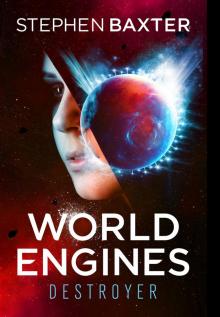 World Engine
World Engine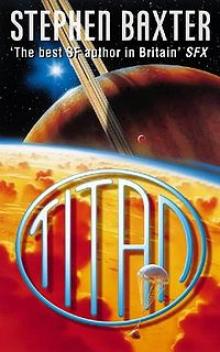 Titan n-2
Titan n-2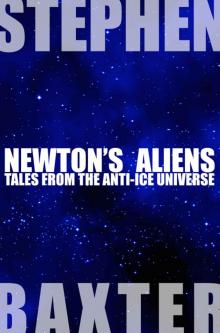 Newton's Aliens: Tales From the Anti-Ice Universe
Newton's Aliens: Tales From the Anti-Ice Universe Exultant
Exultant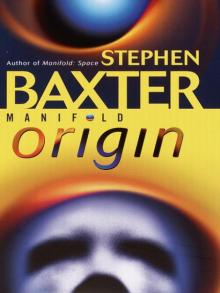 Manifold: Origin
Manifold: Origin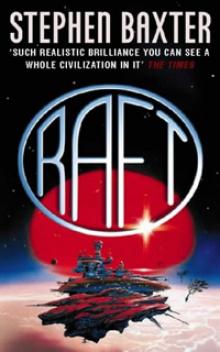 Raft xs-1
Raft xs-1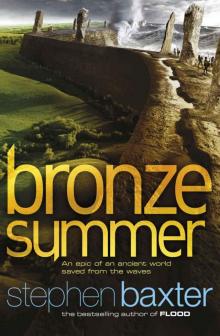 Bronze Summer n-2
Bronze Summer n-2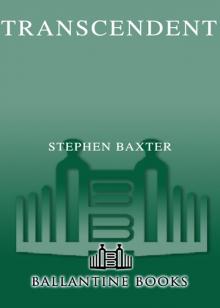 Transcendent
Transcendent Stone Spring
Stone Spring Coalescent
Coalescent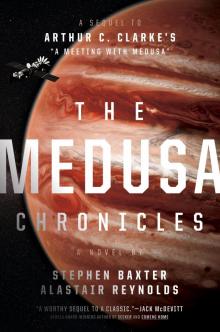 The Medusa Chronicles
The Medusa Chronicles Origin m-3
Origin m-3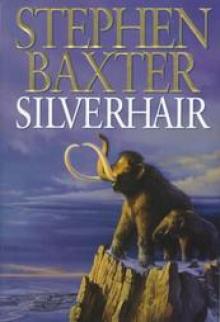 Silverhair tm-1
Silverhair tm-1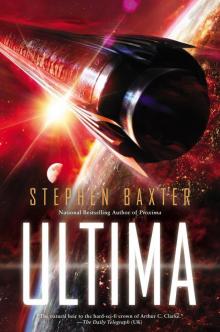 Ultima
Ultima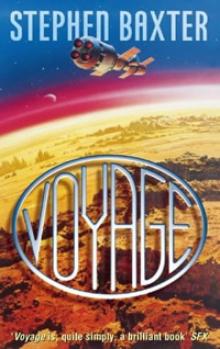 Voyage n-1
Voyage n-1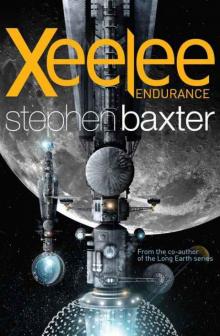 Xeelee: Endurance
Xeelee: Endurance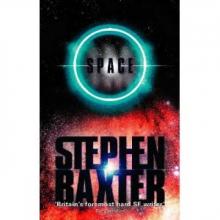 Space m-2
Space m-2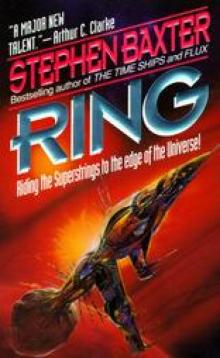 Ring xs-4
Ring xs-4 Raft
Raft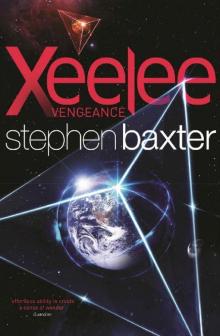 Xeelee: Vengeance
Xeelee: Vengeance Iron Winter n-3
Iron Winter n-3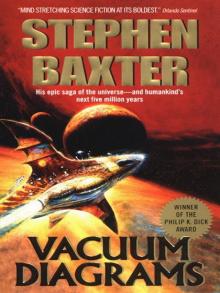 Vacuum Diagrams
Vacuum Diagrams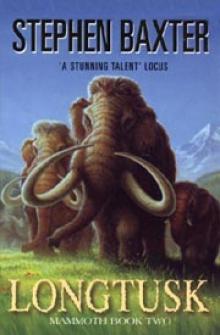 Longtusk tm-2
Longtusk tm-2 Proxima
Proxima Evolution
Evolution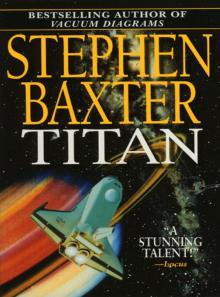 Titan
Titan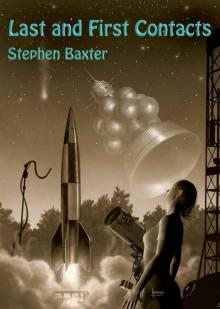 Last and First Contacts (Imaginings)
Last and First Contacts (Imaginings)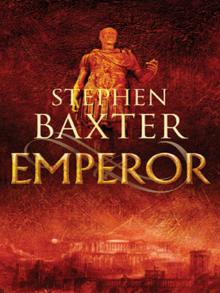 Emperor
Emperor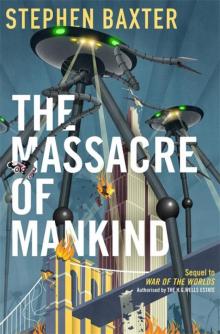 The Massacre of Mankind
The Massacre of Mankind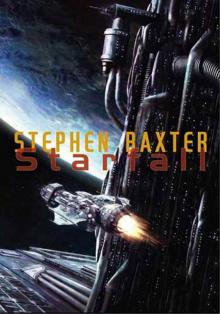 Starfall
Starfall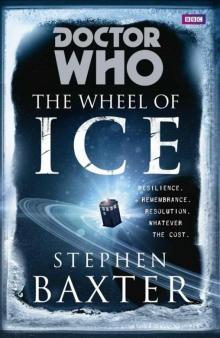 Doctor Who - The Wheel of Ice
Doctor Who - The Wheel of Ice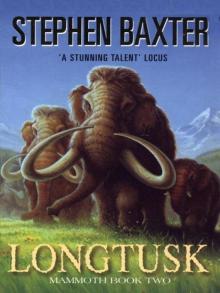 Longtusk
Longtusk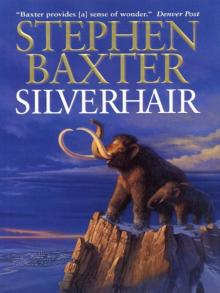 Silverhair
Silverhair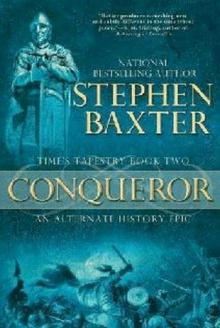 Conqueror tt-2
Conqueror tt-2 Flood
Flood Flood f-1
Flood f-1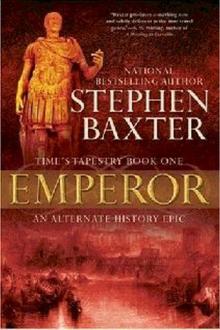 Emperor tt-1
Emperor tt-1 Moonseed
Moonseed Conqueror
Conqueror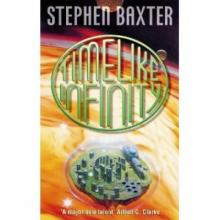 Timelike Infinity xs-2
Timelike Infinity xs-2 The Ghost Pit
The Ghost Pit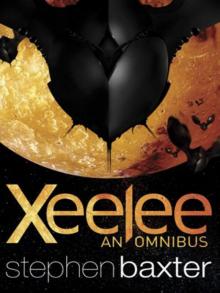 Xeelee: An Omnibus: Raft, Timelike Infinity, Flux, Ring
Xeelee: An Omnibus: Raft, Timelike Infinity, Flux, Ring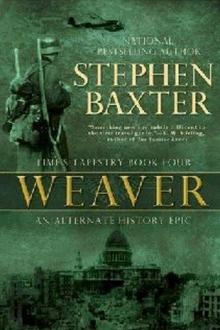 Weaver tt-4
Weaver tt-4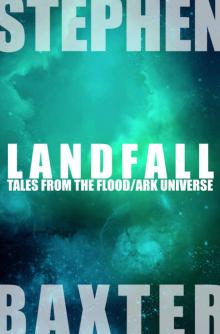 Landfall: Tales From the Flood/Ark Universe
Landfall: Tales From the Flood/Ark Universe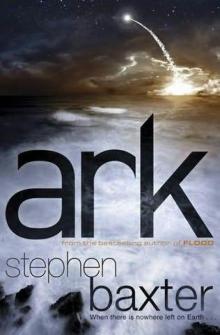 Ark
Ark Emperor: Time’s Tapestry Book One
Emperor: Time’s Tapestry Book One Space
Space Icebones
Icebones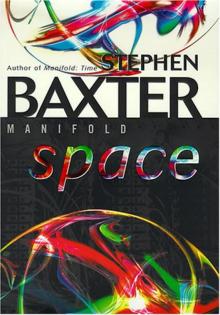 Manifold: Space
Manifold: Space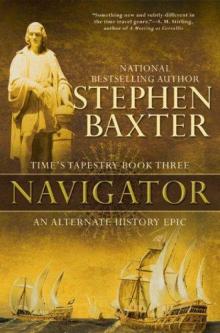 Navigator
Navigator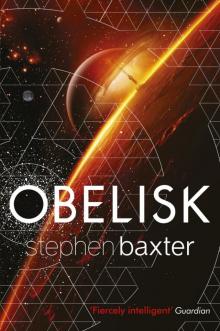 Obelisk
Obelisk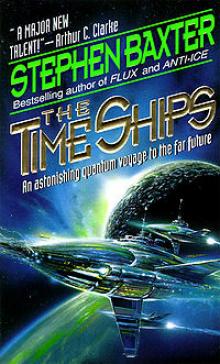 The Time Ships
The Time Ships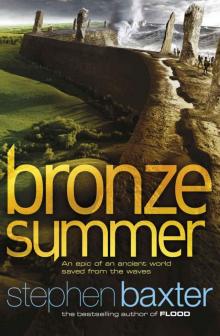 Bronze Summer
Bronze Summer Resplendent
Resplendent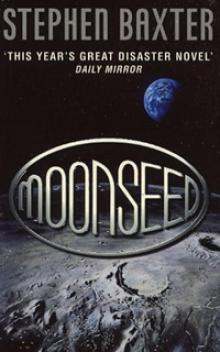 Moonseed n-3
Moonseed n-3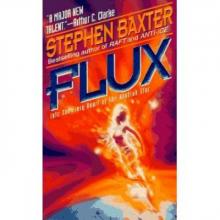 Flux xs-3
Flux xs-3 Transcendent dc-3
Transcendent dc-3 Icebones tm-3
Icebones tm-3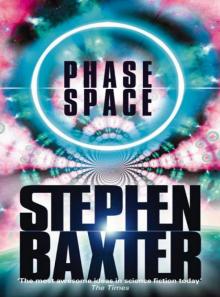 Phase Space
Phase Space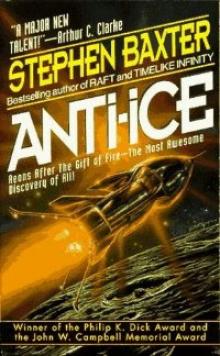 Anti-Ice
Anti-Ice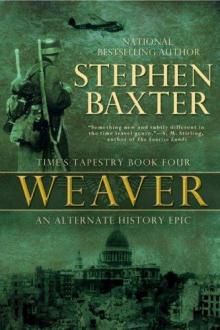 Weaver
Weaver Voyage
Voyage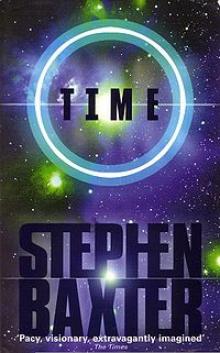 Time m-1
Time m-1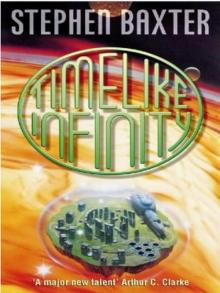 Timelike Infinity
Timelike Infinity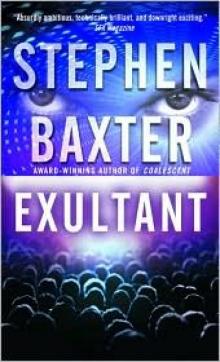 Exultant dc-2
Exultant dc-2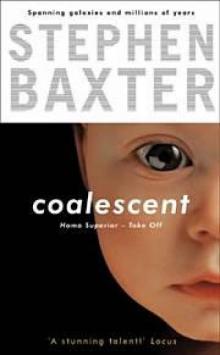 Coalescent dc-1
Coalescent dc-1 Navigator tt-3
Navigator tt-3